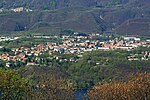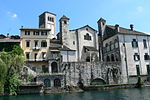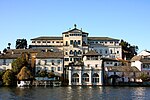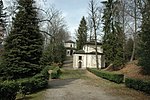Sanctuary of Madonna del Sasso
18th-century Roman Catholic church buildings in ItalyChurches in the province of Verbano-Cusio-OssolaReligious buildings and structures in the province of Verbano-Cusio-OssolaRoman Catholic churches completed in 1748Tourist attractions in Piedmont

The Madonna del Sasso sanctuary is on a spur over the Lake Orta at 638 m height, in the Madonna del Sasso municipality. From the square in front of the church, called "the Cusio's balcony", there is a great view on the lake, the Mottarone, the Alps and the Novara area. The sanctuary is constituted by the church, the bell tower, and the parish house.
Excerpt from the Wikipedia article Sanctuary of Madonna del Sasso (License: CC BY-SA 3.0, Authors, Images).Sanctuary of Madonna del Sasso
Via Follina, Madonna del Sasso
Geographical coordinates (GPS) Address Nearby Places Show on map
Geographical coordinates (GPS)
| Latitude | Longitude |
|---|---|
| N 45.7917 ° | E 8.3686 ° |
Address
Via Follina
Via Follina
28894 Madonna del Sasso
Piedmont, Italy
Open on Google Maps









